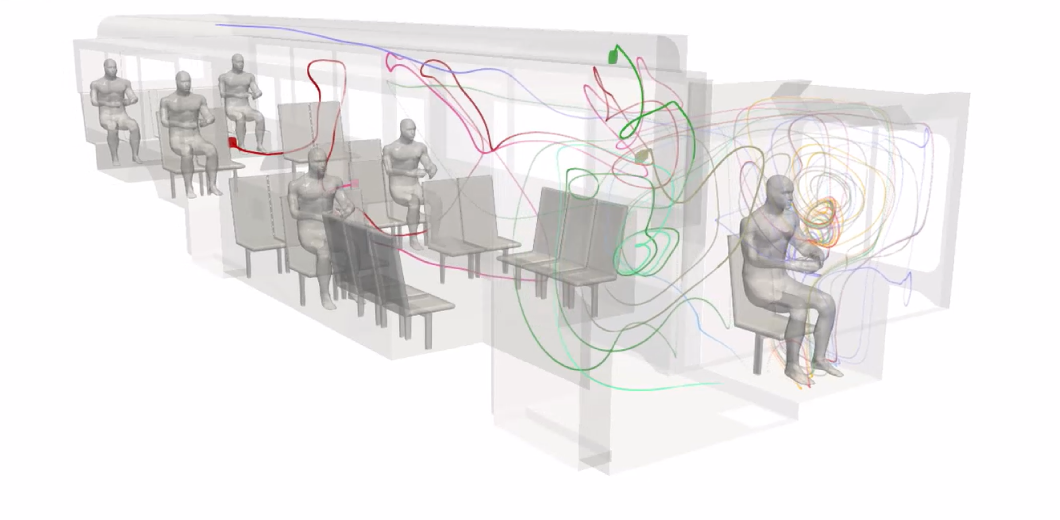Project Scope
This project worked to understand and monitor airflow and droplets by using Computational Fluid Dynamics (CFD) and a novel methodology, or set of tools, to model, simulate, and analyze transmission events such as sneezing, coughing, etc., to demonstrate an application in public transportation systems. This knowledge is critical to track the presence and spread of the SARS-CoV-2 virus, specifically in publicly accessible locations.
Developing a Novel Monitoring Model of the Presence of the SARS-CoV-2 Virus in CATS Buses
The goal of this research project was to understand and monitor airflow and droplets – which is critical to tracking the presence and spread of the SARS-CoV-2 virus – specifically in public transportation systems.
A key takeaway of this research project concluded that keeping the windows closed and letting the HVAC do its job is safer than having the windows open. This study was published in MDPI’s open-access, peer-reviewed journal Fluids. Click here to read the publication. The Institute of Digital Engineering USA is working with UNCC to improve the CATS buses’ airflow based on the determined risks and these results can be applied to other public transportation infrastructure.
Partners
Institute of Digital Engineering USA
University of North Carolina Charlotte
Corvid




